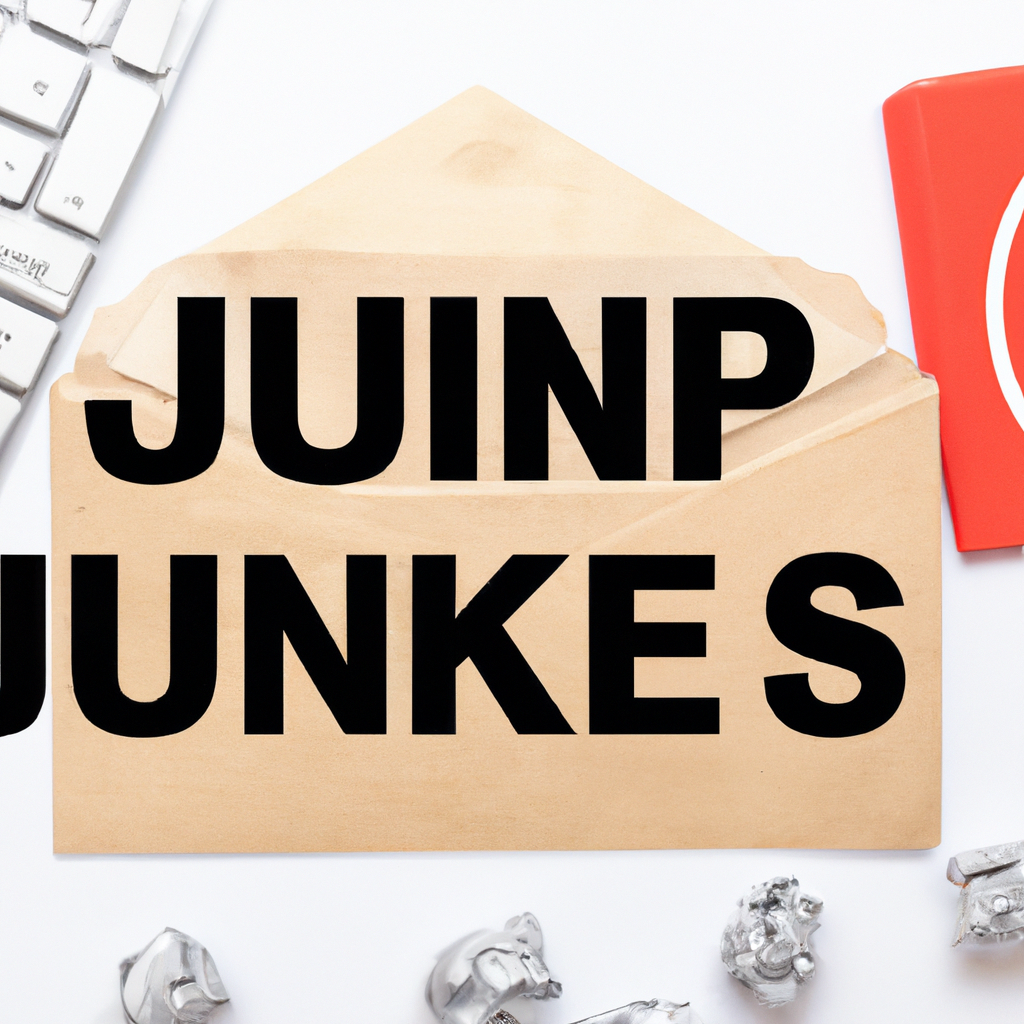Unveiling Mysteries: Unraveling the Enigma of Junk Messages on iPhone
Is your iPhone being held hostage by the clutter of junk messages, silently infiltrating your precious device? Fret not, for we have embarked on a quest to uncover the ultimate secret regarding these virtual intruders. In this revealing article, we aim to shed light on the enigmatic world of junk messages in order to empower you, dear reader, with the knowledge to decipher and tackle this nuisance head-on. So, grab your detective hat, dust off your magnifying glass, and journey with us as we embark on an expedition to learn how to view junk messages on your beloved iPhone. Get ready to unravel the mysteries that lie within!
Table of Contents
- Understanding Junk Messages on iPhone
- Identifying and Differentiating Junk from Legitimate Messages
- Built-in Spam Filters: How They Work and How to Configure Them
- Third-Party Apps: Enhancing Junk Message Detection and Filtering
- Managing and Reporting Junk Messages: A Step-by-Step Guide
- Tips to Minimize Junk Messages on iPhone
- Additional Measures: Protecting Your iPhone from Junk Messages
- Q&A
- Final Thoughts
Understanding Junk Messages on iPhone
In this post, we will delve into the intriguing world of junk messages on your beloved iPhone. Yes, those annoying pestering texts that seemingly appear out of thin air and invade our peace. Fear not, for we shall unravel the mysteries of this digital pestilence!
So, what exactly are these hideous junk messages, you may wonder? Well, they come in various forms and shapes, like a shape-shifting creature from a sci-fi flick. From dubious offers promising instant wealth to pesky advertisements for products you didn’t even know existed – junk messages can be quite a headache. But fret not, fellow iPhone users, because we are here to arm you with knowledge and tactics to fight back against this digital nuisance.
- The Anatomy of a Junk Message: Before we embark on our journey of understanding, let’s familiarize ourselves with the telltale signs of a junk message. These messages typically come from unknown or suspicious senders and often contain links that could lead to malicious websites.
- The Bane of Phishing: Ah, the crafty art of phishing. Junk messages are notorious for their attempts to steal personal information through deceptive tactics. Be cautious of messages that request your bank details, passwords, or any sensitive data. Remember, if something seems too good to be true, it probably is!
Identifying and Differentiating Junk from Legitimate Messages
When it comes to your inbox, it can often be a challenge to navigate through the clutter of junk messages to find the legitimate ones. Fortunately, there are some handy tricks you can use to identify and differentiate between the two.
To start off, pay attention to the email sender’s address. Scammers often try to deceive you by using addresses that may appear legitimate at first glance. Look for any misspellings, unusual domain names, or additional numbers or letters that seem out of place. Legitimate emails, on the other hand, usually have a professional and recognizable sender address.
- Grammar and spelling mistakes are a red flag for junk messages. Legitimate emails tend to be well-written and free of errors. Keep an eye out for any unusual phrasing or awkward sentences, as scammers may not be as proficient in the language they use.
- Check if the email addresses you by your name. Authentic messages often address you directly, while junk messages may use generic introductions like “Dear Customer” or “Valued User”.
- Beware of urgent requests for personal information. Scammers often try to create a sense of urgency to trick you into divulging sensitive details. Legitimate organizations usually handle such matters through secure channels and won’t ask for your information in an unsolicited email.
By applying these simple techniques, you will be able to spot those sneaky junk messages among the sea of legitimate ones. Remember, your vigilance is crucial in ensuring your online safety and protecting yourself from potential scams.
Built-in Spam Filters: How They Work and How to Configure Them
When it comes to managing your inbox, dealing with spam can be quite a challenge. Luckily, modern email platforms come equipped with built-in spam filters that help keep unwanted or malicious emails at bay. These filters work tirelessly behind the scenes, sorting through incoming messages and employing advanced algorithms to determine what is genuine and what is spam.
The way these built-in spam filters work is by analyzing various attributes of an email, such as the sender’s reputation, subject line, content, and attachments. This intelligent filtering process helps identify patterns and characteristics commonly associated with spam emails. Once identified, the filters take appropriate action, either sending the email to your spam folder or directly blocking it from reaching your inbox. However, it’s worth noting that spam filters are not foolproof, and there’s always a slight chance that a legitimate email may end up being filtered as spam.
- Customization: Most email providers allow you to customize your spam filter settings to fit your preferences. You can adjust the sensitivity of the filter based on your tolerance for false positives or false negatives.
- Whitelisting and blacklisting: To ensure important emails are never wrongly flagged as spam, you can create whitelists to designate trusted contacts or domains. Similarly, blacklists help you block specific email addresses or domains that consistently send unwanted emails.
- Flagging and reporting: Built-in spam filters often provide options to flag suspicious emails, allowing you to report them and contribute to improving the overall effectiveness of the filter system.
Keep in mind that configuring spam filters is not a one-size-fits-all solution, as everyone’s preferences and needs vary. Experimenting with the settings to strike the right balance between catching spam and avoiding false positives is key. By leveraging the power of built-in spam filters and fine-tuning their configuration, managing your inbox becomes a more efficient and hassle-free experience.
Third-Party Apps: Enhancing Junk Message Detection and Filtering
In today’s world of constant connectivity, we are all too familiar with the frustration of junk messages cluttering our inboxes. Thankfully, the advent of third-party apps has revolutionized the way we detect and filter these pesky messages, making our lives much easier. These innovative apps function as powerful allies, equipping us with enhanced junk message detection and filtering capabilities that perfectly complement the native functionalities of our email clients.
One key advantage of third-party apps is their ability to intelligently analyze incoming messages, distinguishing between legitimate emails and unwanted junk. Utilizing advanced algorithms, these apps accurately identify suspicious patterns, malicious links, and spammy language that might otherwise go unnoticed. By automatically diverting such messages to separate folders, or categorizing them with distinct labels, third-party apps ensure that our primary inboxes remain clutter-free and reserved for important communications.
- Smart Whitelisting and Blacklisting: These apps empower us to create finely-tuned rules, allowing us to whitelist trusted contacts and blacklist known spammers. This way, we can be confident that important messages from our contacts always find their way to our main inbox, while persistent junk senders remain banished.
- Real-Time Threat Detection: With constant monitoring and updates, third-party apps stay up-to-date with the latest threat intelligence, actively identifying and blocking suspicious messages to safeguard our privacy and security.
- Customizable Filters: These apps offer a range of customizable filters, enabling us to set our own criteria for message handling based on specific sender attributes, subject lines, or content keywords. With this flexibility, we can tailor our filters to meet unique needs and preferences.
Managing and Reporting Junk Messages: A Step-by-Step Guide
Junk messages can be a nuisance, cluttering up your inbox and wasting valuable time. Luckily, there are steps you can take to effectively manage and report these pesky messages. Follow this step-by-step guide to regain control of your inbox:
- Identify junk messages: Familiarize yourself with the common signs of junk messages including suspicious email addresses, generic greetings, and spelling mistakes. These are often indicators that a message may be spam.
- Create filters: Take advantage of your email provider’s filtering options to automatically sort incoming messages. Set up filters to direct suspected junk messages to a designated folder or mark them as spam for further review.
- Report spam: Most email platforms offer the ability to flag emails as spam. Use this feature to help your email provider identify and block future junk messages. Reporting spam not only helps you but also protects other users.
- Unsubscribe wisely: If you receive unsolicited marketing emails, use caution when unsubscribing. Only unsubscribe from reputable senders, as clicking on suspicious unsubscribe links can confirm your email address is active to spammers.
The steps outlined above should help you take control of your inbox and reduce the impact of junk messages. Remember to periodically review and adjust your filters to ensure they are catching the appropriate messages. By actively managing and reporting junk messages, you can enjoy a clutter-free and more efficient email experience.
Tips to Minimize Junk Messages on iPhone
As modern technology continues to advance, so does the struggle to keep our digital lives spam-free. While dealing with junk messages can be frustrating, fear not! We’ve rounded up some ingenious tips and tricks that will help you reclaim your iPhone from the clutches of unwanted texts.
1. **Optimize your iMessage settings**: Dive into the depths of your iPhone settings and customize your iMessage experience. Enable the “Filter Unknown Senders” option to automatically separate messages from unfamiliar contacts, saving you the hassle of deciphering their legitimacy. This nifty feature will ensure your primary inbox remains pristine.
2. **Embrace the power of blocking**: Don’t let spam messages clog up your mental space. Take charge by blocking specific phone numbers or contacts. Whether it’s persistent marketing calls or dubious texts, use the built-in “Block this Caller” feature to rid yourself of these nuisances—forever.
Additional Measures: Protecting Your iPhone from Junk Messages
When it comes to keeping your iPhone free from the onslaught of junk messages, it’s important to stay one step ahead of those pesky spammers. Here are a few additional measures you can take to fortify your device and restore your peace of mind:
- Enable Filtering: Activate your iPhone’s built-in spam filter to automatically divert junk messages to a separate folder. This nifty feature uses advanced algorithms to analyze message content and identify potential spam, saving you the hassle of dealing with unwanted messages.
- Manage Your Contacts: Be meticulous about maintaining your contact list. By regularly reviewing and updating your contacts, you can reduce the likelihood of receiving junk messages from unknown sources. Make it a habit to delete any suspicious or unfamiliar contacts to minimize potential risks.
- Install a Robust Anti-spam App: Bolster your iPhone’s defense by installing a reliable anti-spam app from the App Store. These apps provide an additional layer of protection by actively scanning and filtering incoming messages as they arrive, ensuring only legitimate ones reach your inbox.
Remember, the key to safeguarding your iPhone from junk messages lies in adopting a proactive approach. By employing these additional measures, you can bid farewell to annoying spam and enjoy a clutter-free messaging experience on your iPhone.
Q&A
Q: Tired of the junk cluttering your iPhone? Want to know how to view those pesky messages? We’ve got you covered with some creative answers. So, let’s get to it: how can you view junk messages on your iPhone?
Q: I accidentally sent a message to my junk mailbox on my iPhone. How can I view it?
A: No worries, we’ve got a solution for you! To find that lost gem, head to your Mail app, locate the “Mailboxes” button at the top left corner, then scroll down until you reach the “Junk” folder. Voila! Your mistakenly discarded message should be patiently waiting there.
Q: I suspect some of my important emails are stuck in the junk folder. Can I easily check if that’s the case?
A: Absolutely! Follow these simple steps: Open your Mail app, tap on “Mailboxes” at the top left corner, and scroll down to locate the “Junk” folder. Once inside, scan through the sea of unruly messages: who knows, your missing email might finally reveal itself from the shadows.
Q: Can I create a shortcut to directly access my junk folder?
A: Although there isn’t a built-in shortcut for the “Junk” folder, you can customize your Mailboxes to suit your needs! Tap on “Edit” at the top right corner of the Mail app, scroll down, and select “New Mailbox.” Give it a fancy name like “Junk Yard” and choose the Junk mailbox as its destination. From now on, the shortcut to your cherished junk folder will be just a tap away!
Q: Is there a way to filter my inbox to only display junk messages?
A: Unfortunately, there’s no magical filter for displaying junk messages exclusively in your inbox. However, you can employ a clever workaround! Inside your Mail app, tap on “Mailboxes,” select ”Edit” at the top right corner, and scroll down to “Add Mailbox.” Choose “Junk” as your new mailbox, and presto! Now you have a separate place to revel in the organized chaos of junk messages.
Q: Can I permanently delete all junk messages at once?
A: Definitely! To unleash the eradication of junk, open your Mail app, head to the “Junk” folder, click “Edit” at the top right corner, and select all the messages your heart desires to obliterate. Lastly, kiss them goodbye by tapping the trash bin icon. Boom! Your junk messages will vanish into oblivion forever.
Q: Are there any apps that can help me manage my junk messages more efficiently?
A: Absolutely! The App Store is rife with various anti-spam and junk management apps. You can explore apps like “Spamdrain,” “Clean Email,” or “Block & Report Call.” They offer advanced sorting, blocking, and reporting features to free you from the clutches of junk messages. Find the best match for your needs and bid farewell to unwanted digital clutter!
Q: Help! I deleted an important email mistakenly considering it junk. Can I recover it somehow?
A: Fear not! There’s a glimmer of hope. Head over to your “Junk” folder in the Mail app, open the message that was erroneously trashed, and tap “Move to” at the bottom left corner. Miraculously, you’ll find a list of suitable folders to save your message. Choose the correct one, and your vital email will find its way back to its rightful place.
Q: Can I set up automatic filtering for junk messages on my iPhone?
A: Absolutely! Empower your iPhone to become the ultimate junk warrior! Open your Mail app, head to “Preferences,” and select your email account. Tap on “Advanced” and choose “Settings.” Then, navigate to “Junk Email” or a similar option, and enable automatic filtering. With this superhero upgrade, your iPhone will vigilantly send those junk enemies straight to the abyss without your intervention!
Remember, even in the realm of junk messages, there is a method to the madness. Keep exploring and mastering these tips, and you’ll soon triumph over the unruly forces cluttering your iPhone inbox!
Wrapping Up
As we come to the end of our guide on viewing junk messages on your iPhone, we hope you’ve gained valuable insights on managing those pesky intrusions. While junk messages can be an annoyance, it’s empowering to know that you possess the knowledge and tools to regain control over your digital space.
Remember, with a few simple steps, you can navigate the world of junk messages like a seasoned captain navigating stormy waters. Deleting them, reporting them, or acting proactively to prevent them altogether, the choice is yours.
As you embark on your new journey towards a clutter-free inbox, don’t forget to regularly review your mail settings, as technology is an ever-evolving force. Stay vigilant, stay informed, and stay one step ahead of those digital troublemakers.
So, whether it’s filtering out phishers, outsmarting spammers, or defying the barrage of unwanted offers, keep in mind that you hold the ultimate power over your iPhone’s message ecosystem.
May your inbox be a tranquil oasis, adorned only with messages that matter, and may your iPhone be a sanctuary of serenity in this ever-connected world.
Farewell, dear reader, and farewell, junk messages. It’s time to bid adieu to the chaos and embrace a clutter-free existence.








